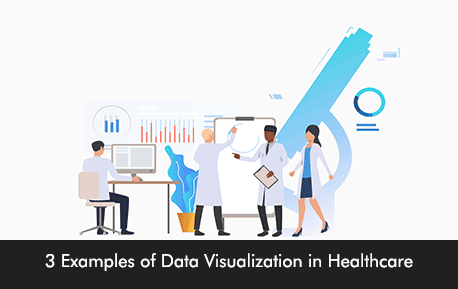Data visualization and analytic tools are now critical for every healthcare organization to succeed and become more competitive. The global healthcare data analytics market is estimated to grow 3.5 times in only six years. The increase in the use of data visualization is due to the COVID-19 pandemic bringing information and data into the spotlight to provide meaningful insights. Visualization of data helps healthcare organizations operate effectively by using charts, tables, or graphs to interpret data promptly and support the decision-making process.
What is Health Data Visualization?
Medical data comes from various sources such as Electronic Medical Records (EMR) Software systems, hospital management systems, laboratories, IoT devices, and billing and coding software solutions. Data visualization tools help this data to transform into visuals so healthcare professionals can recognize various trends and interpret analytics results faster.
Examples of Data Visualization is Healthcare
Visualization tools of today can be used by different stakeholders in the healthcare sector such as healthcare providers, government officials, and patients converting complex data into visuals that can be easily comprehended. Here are some examples of modern visualization tools used by healthcare organizations in the US.
1. Interactive Dashboards
Interactive dashboards are the most regularly used data visualization tools by healthcare organizations. They provide the functionality of interactive reports which can help to display real-time data or show trends over time.
2. Interactive Websites or Apps
Interactive apps, websites, and widgets can be used by users to focus on data according to relevance and importance. For Example, the BBC website displaying updated stats on COVID-19 cases.
3. Infographics and Motion Graphics
Infographics help to visualize complex data in a format that can be easily understood by the public. Infographics can be used to provide critical information related to disease and references can be offered for prevention methods. An example of an animated infographic is motion graphics which is used extensively in tutorials and educational videos to provide higher engagement levels.
Benefits of Data Visualization in Healthcare
Data visualization is a robust tool that can facilitate the improvement of patient care by helping medical staff members identify different dangers. Real-time visualization of patient health status can help doctors categorize patients according to treatment plans. Patient records in a single dashboard provide all critical information in a single place which improves treatment effectiveness.
Data from remote patient monitoring devices and fitness apps can be used to recognize trends and reveal any health risks to the surface. Healthcare data visualization also helps governments to enhance decision-making related to public health.
Data visualizations tools along with Artificial Intelligence (AI) and machine learning can be used to eliminate errors and detect any scam in medical billing and patient prescriptions to provide seamless patient services and keep them satisfied.
Moving Ahead
Implementing healthcare data visualization tools is not an option but a need for healthcare organizations to help with patient diagnosis and treatment which is the ultimate goal of healthcare. By understanding data better decision-making can enhance which leads to improved performance.







